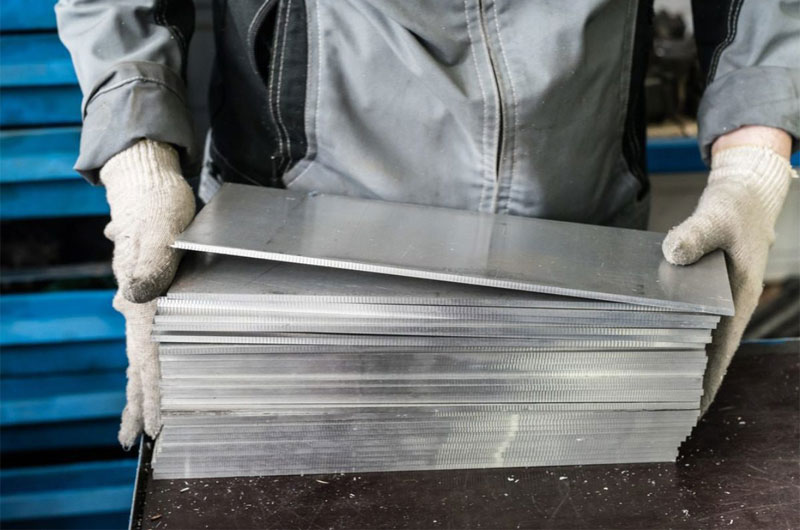Galvanized steel is widely used in construction, HVAC systems, roofing, and sheet metal fabrication due to its superior corrosion resistance provided by a protective zinc coating.
However, cutting galvanized steel without damaging this coating requires careful planning, proper tools, and a precise technique. Damaging the zinc layer during the metal cutting process can lead to premature rusting and reduced lifespan of the metal.
This article will guide you through methods and best practices for cutting galvanized steel while preserving the integrity of its protective layer.
Why the Zinc Coating Matters?
Galvanized steel is coated with a thin layer of zinc through a hot-dip galvanization or electroplating process. This layer acts as a barrier and provides cathodic protection, meaning it sacrifices itself to prevent the base steel from rusting. When the coating is damaged or removed during cutting, the exposed steel becomes vulnerable to corrosion, especially in humid or outdoor environments.
Tools for Cutting Galvanized Steel Without Damaging Zinc Coating
Choosing the right cutting tool is crucial to minimize heat and abrasion, which can burn or scrape off the zinc coating.
1. Tin Snips (Aviation Snips)
- Best for: Thin sheets (up to 26–22 gauge)
- Advantages: Manual operation avoids heat buildup; clean cuts
- Tips: Use straight, left, or right snips depending on the cut direction. Avoid excessive bending or twisting.
2. Cold Saw
- Best for: Precision cuts on thicker sections
- Advantages: Low RPM with coolant minimizes heat; maintains zinc integrity
- Tips: Use blades designed for ferrous metals; maintain sharpness
3. Jigsaw with Metal Blade
- Best for: Curved or irregular cuts
- Advantages: Controlled cutting; minimal heat if done slowly
- Tips: Use a fine-tooth bimetal blade; keep speed moderate
4. Power Shears or Nibbler
- Best for: Large sheets or commercial use
- Advantages: Cold cutting process; clean edges
- Tips: Ideal for preserving zinc layer during mass production or fabrication
5. Angle Grinder with Cut-Off Wheel (Use with Caution)
- Best for: Quick straight cuts
- Disadvantages: Generates heat and sparks, which can burn zinc coating
- Tips: If used, cool the metal quickly and treat exposed areas afterward
Best Practices for Protecting the Zinc Coating
Even when using the correct tools, some damage to the zinc layer can be unavoidable. Here’s how to minimize and manage it:
1. Use Low-Speed Cutting
Lower blade speeds reduce friction and heat, preserving the coating.
2. Apply Cutting Lubricant
Lubricants help cool the blade and the metal, reducing the chance of zinc burn-off.
3. Cool the Metal During Cutting
Use a spray bottle or compressed air to keep the cut area cool.
4. Deburr Gently
After cutting, remove sharp edges with a file or deburring tool—avoid grinding which can scrape off the coating.
5. Touch-Up Exposed Edges
Apply a zinc-rich cold galvanizing spray or paint to any exposed or burned areas to restore corrosion resistance.
Post-Cut Finishing Tips
- Clean the surface: Wipe off cutting oils or debris to prevent buildup.
- Inspect edges: Look for flaking, chipping, or signs of coating loss.
- Apply rust protection: Especially for outdoor or moisture-prone installations.

